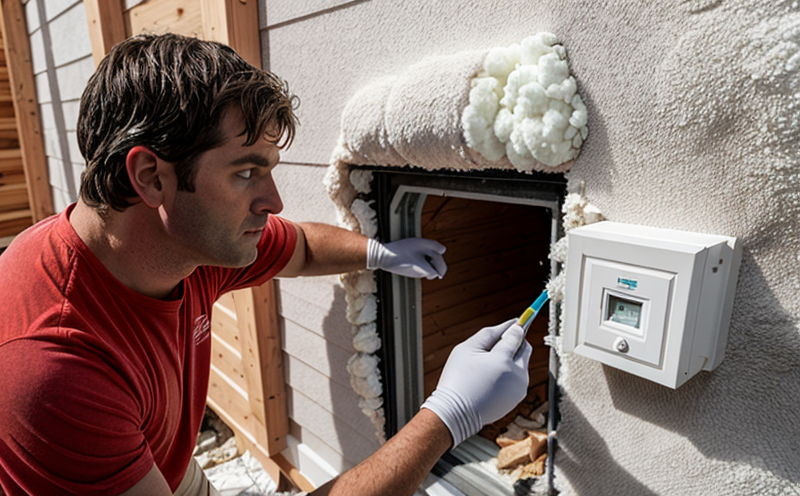EN 13165 Polyurethane Panels Thermal Assessment
The EN 13165 standard provides a robust framework to assess the thermal performance of polyurethane panels, ensuring they meet stringent insulation and energy efficiency requirements. This test is crucial for manufacturers aiming to comply with international standards and achieve better-than-average performance in terms of thermal resistance.
Thermal assessment involves a series of carefully controlled experiments designed to evaluate how effectively the material prevents heat transfer. This is achieved by subjecting specimens to specific environmental conditions that simulate real-world usage scenarios. The test requires precise control over variables such as temperature, humidity, and exposure duration.
The standard specifies clear criteria for specimen preparation, including dimensions, thickness, and the inclusion of any necessary additional materials like adhesives or reinforcement layers. This ensures consistency across different samples, allowing accurate comparison and reliable results. The assessment process typically includes measuring heat flow through the sample using calibrated equipment such as guarded hot plates.
The EN 13165 standard also emphasizes the importance of reporting detailed findings. Reporting must include not only the thermal resistance (R-value) but also any deviations from expected performance, potential areas for improvement, and recommendations based on test outcomes. This comprehensive approach helps manufacturers identify opportunities to enhance product quality.
Real-world applications of this testing are vast. For instance, in construction projects where energy efficiency is paramount, the results can inform decisions about material selection. Similarly, R&D teams use these assessments to innovate and improve existing products or develop new materials with enhanced thermal properties. This not only drives technological advancement but also contributes positively to environmental sustainability.
Environmental and Sustainability Contributions
- Reduces energy consumption by ensuring that buildings are better insulated, thus lowering heating and cooling costs.
- Promotes sustainable construction practices by encouraging the use of materials with high thermal performance.
- Helps meet international environmental commitments related to reducing greenhouse gas emissions from building sectors.
Competitive Advantage and Market Impact
- Enhances brand reputation by demonstrating commitment to quality and sustainability.
- Attracts environmentally conscious clients who prioritize energy efficiency in their projects.
- Facilitates compliance with regulatory requirements, thereby avoiding costly penalties and potential market entry barriers.





